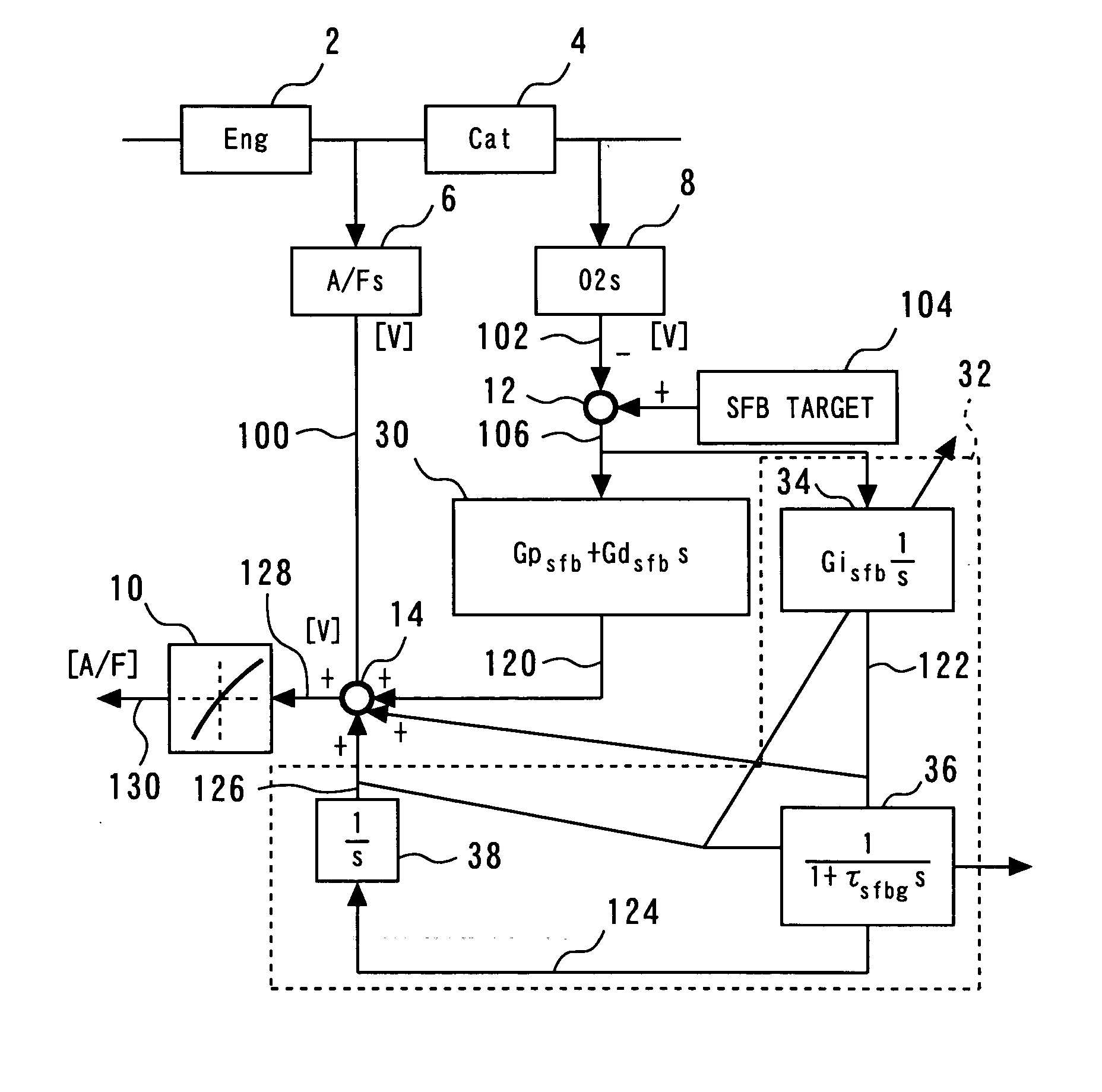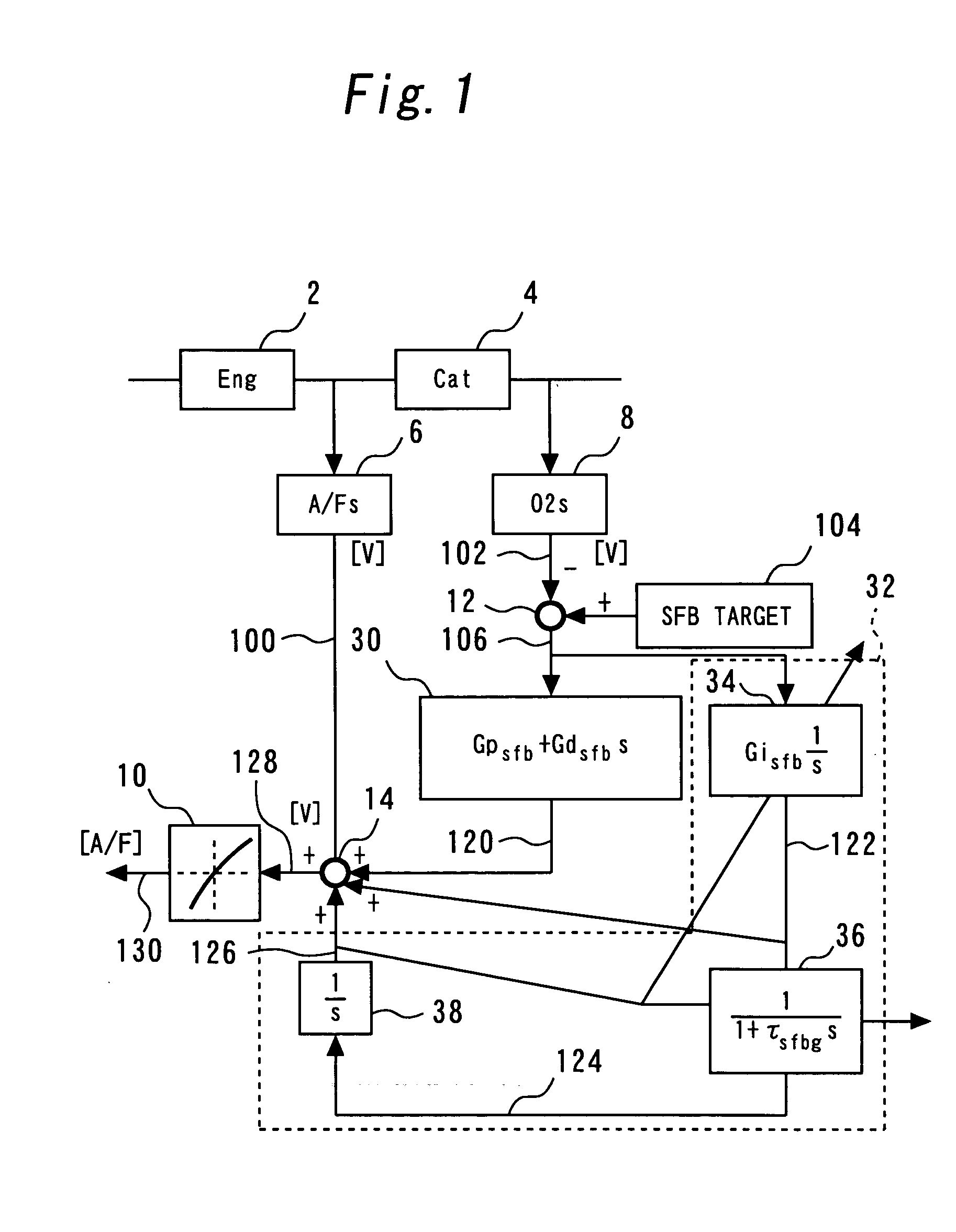Air-fuel ratio controller for internal-combustion engine
a technology of air-fuel ratio controller and internal combustion engine, which is applied in the direction of electrical control, process and machine control, etc., can solve the problems of time-consuming operation, learning value, and inability to purify nitrogen oxides (noxs), and achieve stable emission characteristics and learning value acquisition. stable
- Summary
- Abstract
- Description
- Claims
- Application Information
AI Technical Summary
Benefits of technology
Problems solved by technology
Method used
Image
Examples
first embodiment
[0024] A first embodiment of the present invention is described below referring to FIGS. 1 to 4.
[0025]FIG. 1 is a block diagram showing the configuration of an air-fuel ratio controller according to the first embodiment of the present invention. FIG. 2 is a block diagram showing the configuration of an air-fuel ratio controller which was devised during drafting of the present invention (hereinafter, this air-fuel ratio controller is referred to as the comparison object device). Hereunder, these two air-fuel ratio controllers are contrasted to make features of the air-fuel ratio controller of the present embodiment clear and obvious. Although the air-fuel ratio controller of the present embodiment can conduct main feedback control and sub-feedback control, only sections related to the sub-feedback control are extracted and shown below. A method of conducting the main feedback control is not detailed below since the method does not form a major part of the present invention. The same...
second embodiment
[0060] A second embodiment of the present invention is described below referring to FIG. 5.
[0061] Multiple parameters are used to calculate a learning value in sub-feedback control of an air-fuel ratio controller. In the air-fuel ratio controller of the present invention, as described for the first embodiment, multiple parameters, “sfbi”, “sumdoxs”, and “sfbism”, are also used to calculate a learning value. In conventional devices, values of these parameters concerned with the calculation of a learning value are constantly updated as long as sub-feedback control is being executed under established sub-feedback control execution conditions. If the sub-feedback control execution conditions are not established, however, the above values are cleared and are newly calculated from the beginning when the sub-feedback control execution conditions are established next time. However, the fact that the parameters are cleared each time the sub-feedback control execution conditions fail to be e...
third embodiment
[0066] A third embodiment of the present invention is described below referring to FIG. 6.
[0067] In internal-combustion engines, the fuel cutoff for temporarily stopping fuel injection is conducted if the vehicle speed exceeds a maximum speed limit, if the engine speed reaches a speed limit, or under other required operating conditions. When the fuel cutoff is executed, since unburnt fresh air directly flows into a catalyst 4, an oxygen-occluding state of the catalyst 4 saturates in due course of time and an O2 sensor continues to generate a lean-state output signal for a while after the fuel cutoff. If learning of the learning value in sub-feedback control is conducted under these conditions, the learning value is mis-learnt so that an air-fuel ratio signal 100 from an A / F sensor 6 is corrected to indicate a lean state.
[0068] The air-fuel ratio controller according to the present embodiment, therefore, prevents mis-learning of the learning value during fuel cutoff, by making the ...
PUM
 Login to View More
Login to View More Abstract
Description
Claims
Application Information
 Login to View More
Login to View More - R&D
- Intellectual Property
- Life Sciences
- Materials
- Tech Scout
- Unparalleled Data Quality
- Higher Quality Content
- 60% Fewer Hallucinations
Browse by: Latest US Patents, China's latest patents, Technical Efficacy Thesaurus, Application Domain, Technology Topic, Popular Technical Reports.
© 2025 PatSnap. All rights reserved.Legal|Privacy policy|Modern Slavery Act Transparency Statement|Sitemap|About US| Contact US: help@patsnap.com



